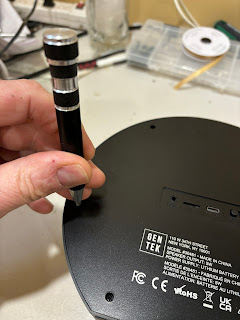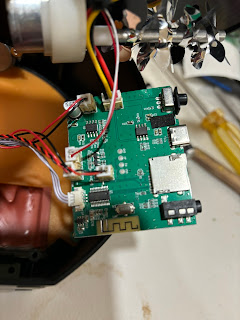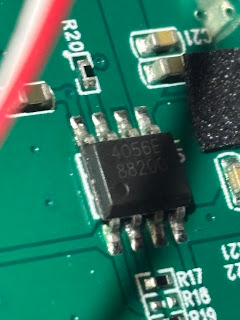One thing that I've noticed in recent times is that there are a lot of electronic gizmos out there that try to jam a lot of gimmicks into a single device. A lot of those gimmicks I find to be a bit on the tacky side and really don't add any real improvement on the prime purpose of the device.
I think a lot of that stems back to my university days when I took a course on human interface design (granted it's a bit of an obscure subject, but I did find pretty fascinating). In broad strokes, the main take away I took from the course was that more the "stuff" you cram into something, the more unusable it becomes for a human to operates it. Back in the day, the prime suspect of this crime was the lowly clock radio that tended to have many, many buttons that control things that aren't related to the function of keeping time and waking you up. Sadly, considering that I still have difficulty in finding the snooze button in the morning, this is still very true today.
So it's safe to say, I don't tend to pay much attention to the noise that emanates from the electronics section of your typical discount department store, but for some strange reason, this caught my eye.
 |
| Fireplace Bluetooth Speaker |
On the surface it's basically just another Bluetooth speaker, but what really caught my attention was the "fireplace" feature - yes, another gimmick, but I was actually always a bit curious on how the fire place effect was accomplished, considering that those electric fireplaces you find in homes are a popular item these days, I always wondered how this effect was done and I always wanted to try and recreate that effect on a future project.
So, I popped it into the cart and brought it home.
 |
| Box Contents |
Getting it home and opening up the box I found the usual stuff that you would expect (Aux and USB cables, a small manual and the speaker itself). The speaker appears to be made of the sort of cheap plastic that I would would fully expect from something like this.
Flipping over the back showed the specs of the unit
 |
| Speaker Specifications |
Looking at the back of the speaker, I confirmed the suspected country of origin, along with a good assortment of certification labels. But one thing that did leap out at me was the power output of the speaker. Five watts is actually pretty impressive for something like this, whether that it is accurate we won't be able to confirm until we get inside.
We got this far, how does it sound? How about does the "fire place" look?
On the whole it's OK - I wasn't keen on it being defaulted at full volume on start up, but it's about what I would have expected for an inexpensive Bluetooth speaker, but that wasn't what I bought the speaker for. The fire effect is basically what I was looking for and definitely looks like what an electrical fireplace would look like.
So, let's open the hood and take a look inside.
 |
| Opening the Hood |
Off the bat, I'm actually pretty impressed on the design of this thing. Normally I would have expected the back to be glued in place, requiring a "cut job" (and wrecking my goal of not destroying the thing), or one of those proprietary screws for which no screw driver exists. Instead the back was secured with some good old Philips screws.
 |
| Philips screws! |
Once the screws were removed the back was easily opened to expose its secrets.
 |
| The secrets within |
The first thing I noticed that the speaker was stamped as a 5 watt speaker, so that's a good start
 |
| 5 Watt Speaker |
Next I also noticed that the front of the speaker was basically a translucent piece of orange acrylic that was textured, most likely used to help with the flame illusion.
 |
| Orange Acrylic |
At the bottom of the speaker, there was an opening in the acrylic with a series of orange LED's that were of the steady burn variety (personally I was kind of expecting them to flicker since I know you can get LED's that simulate a candle/flame effect).
 |
| Orange LEDs |
Now what really struck me was that the flame effect was actually accomplished by a fairly simple mechanical means in the form of an electric motor that was geared to turn at a slow speed. The motor itself was connected to a shaft on which had what I can only describe as shredded tinfoil attached to it.
 |
| "Shredded Tinfoil" |
The flame effect was accomplished when the motor spun the tinfoil, which in turn reflected the light from the LED's casting the light on the back of the acrylic sheet
That basically explained how we get "fire" and I have pretty good reason to assume that this is also the same approach that's used in those home fireplaces.
With that sorted out, I took a look at the brains of the operation.
 |
| Bluetooth Speaker Circuit |
 |
| Bluetooth Chip |
 |
| Audio Amplifier Chip |
Of course we need a voltage regulator to make sure nothing bad happens to the various electronic bits. We don't want to release any magic smoke after all.
 |
| Voltage Regulator |
 |
| Lithium Battery Charger Chip |


